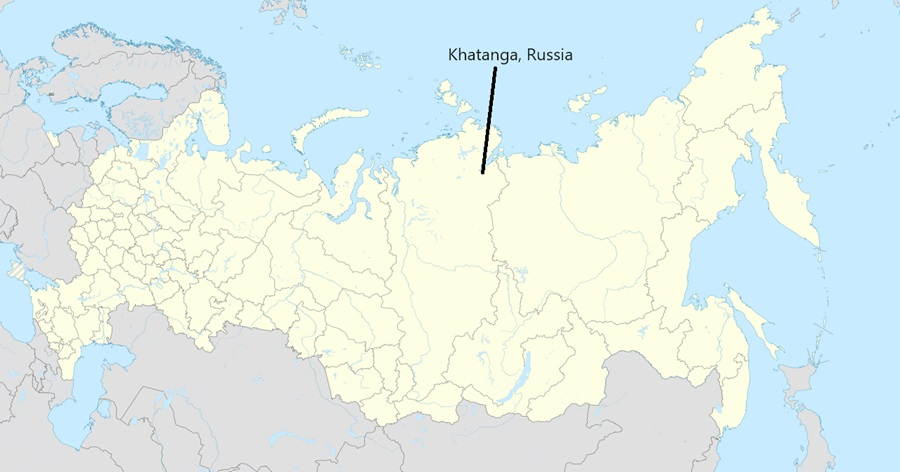

Longyearbyen is a small, remote town located on the island of Spitsbergen in the Svalbard archipelago, in Norway. It is situated in the Arctic Ocean, about halfway between Norway and the North Pole, and is the northernmost settlement in the world with a permanent population. Longyearbyen is located in the Arctic Circle, at 78° 13'N, 15° 33'E, and is only 600 km (370 mi) from the North Pole. It is surrounded by the Barents Sea and the Greenland Sea, and lies within the Arctic tundra climate zone, with cold, snowy winters and cool summers. The settlement is home to around 2,000 people and has a modern infrastructure, including a hospital, a university, a library, a bank and many shops and restaurants. Longyearbyen is also the administrative centre and the largest settlement in the Svalbard archipelago, and is the main point of entry for visitors to the islands. Longyearbyen is a popular tourist destination due to its unique location and its dramatic Arctic landscape. It is known for its spectacular views of the surrounding mountains, glaciers and sea, as well as its unique wildlife, including polar bears, reindeer, seals, walruses and seabirds.
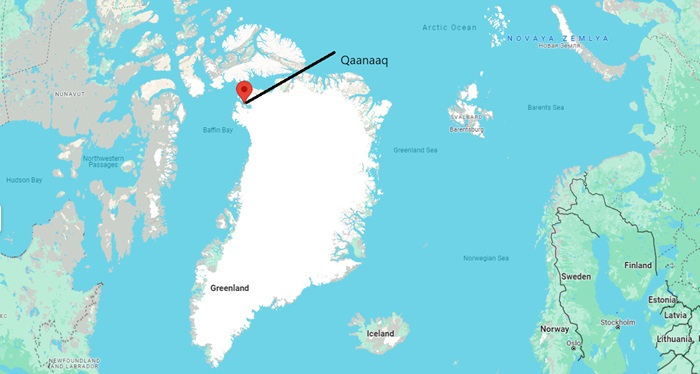
Qaanaaq is a small town in the northernmost region of Greenland. Located in the Thule district, it is the northernmost settlement of any size in the world. It lies on the shores of the Qaanaaq Bay, which is a sub-basin of the larger Baffin Bay. Qaanaaq is situated at a latitude of 77° N, which is higher than the northernmost point of any other country in the world. The town is surrounded by tall mountains, which are covered in snow for most of the year. It is a coastal settlement, and the nearby sea is always icy cold. The area around Qaanaaq is sparsely populated, with only a few small towns nearby. Qaanaaq is an isolated settlement with limited access to other parts of Greenland. The only way to reach the town is by boat or plane, and the nearest airport is located about 500 km away in the town of Upernavik. There is a small harbour in the town, where boats from other settlements can dock. Due to its remote location, the town is often referred to as the "capital of the Arctic". The winter months in Qaanaaq can be particularly harsh, and the town experiences very long periods of darkness. The population of the town is around 600, and the majority of them are Inuit people. Qaanaaq is a unique place, with its own distinct culture and way of life. It is one of the most isolated places on Earth and is a fascinating destination for those looking to experience the Arctic.
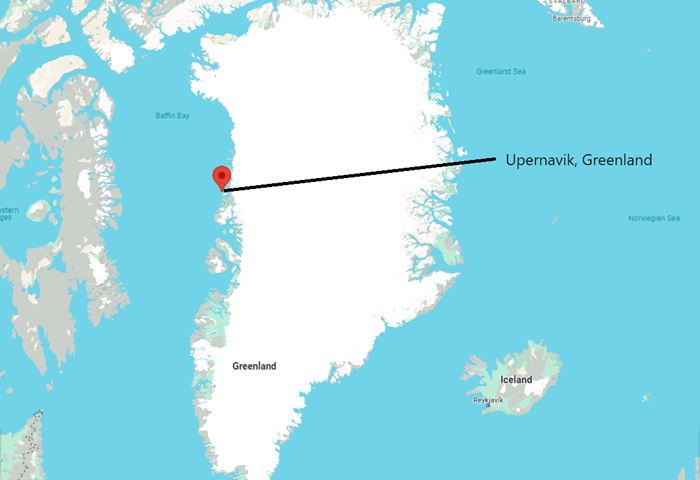
Upernavik is a small fishing village located on a rocky peninsula in northwestern Greenland. The town is situated on the edge of Upernavik Fjord, a long, narrow inlet of the Greenland Sea. Upernavik is the northernmost settlement in Greenland, and it has a population of about 1,100 people. The town is surrounded by dramatic mountains and dramatic views of the Greenland Sea and the Arctic Ocean. The climate in this region is characterized by long, cold winters and short, cool summers. In Upernavik, the average temperature in the summer is approximately 5-7 degrees Celsius, while the winter temperatures average between -10 and -20 degrees Celsius. Upernavik is accessible only by boat or plane, and there are no roads connecting the town to other settlements. There are no schools or hospitals in the town, but there is a small library and a post office. Upernavik is home to the Inuit people, who have lived in the area for centuries. They rely on the sea for their livelihood, hunting for whales and seals and harvesting fish from the local waters. The town has a vibrant fishing industry, and the locals are known for their traditional handicrafts, such as basket weaving and carving. Upernavik is a picturesque and remote settlement, offering a unique insight into life in the Arctic.
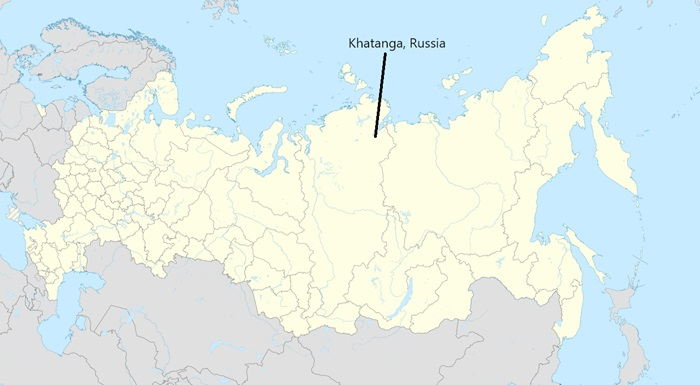
Khatanga is a town located in the Krasnoyarsk Krai region of Siberia in Russia. It is situated on the Taymyr Peninsula in the Laptev Sea, and is surrounded by the Taymyr and Byrranga Mountains. The town lies in the Arctic Circle and is known for its extreme climate, with temperatures dropping to as low as -70°C in winter. Khatanga is the northernmost town in Russia, and is located approximately 1500km from the city of Norilsk and 2200km from the Arctic Ocean. It is also the most northern port on the Arctic Ocean, making it an important hub for trade and transport. The landscape around Khatanga is made up of tundra and taiga, with no trees and a flat terrain. In the summer months, the area is home to a variety of wildlife, including polar bears, reindeer, arctic foxes, and snow geese. The town is also known for its rich cultural heritage, with many traditional festivals and celebrations taking place throughout the year. Khatanga is an incredibly remote town, and is only accessible by plane or boat. Despite its remote location, the town is bustling with activities and offers a range of services to its residents. There are two schools, a hospital, a library, and a variety of stores and restaurants. Khatanga is a culturally diverse town, and has a population of over 7000 people, with a variety of ethnic groups and cultures represented.
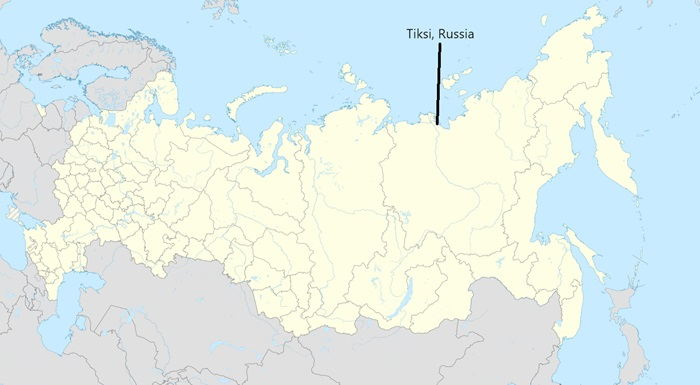
Tiksi is a small port town located in the Sakha Republic of Russia. It is situated on the northern coast of the Laptev Sea and lies just east of the Taymyr Peninsula. Tiksi is the northernmost settlement in Russia, located at 71°N, 128°E, and is one of the most northerly inhabited places in the world. The region surrounding Tiksi is known as the Arctic tundra and is sparsely populated by indigenous peoples, primarily the Nganasans and Dolgans. The climate in Tiksi is harsh, with temperatures dropping to -50°C in the winter and reaching up to 25°C in the summer. The natural landscape surrounding Tiksi is dominated by rivers, lakes, and mountains. The Lena River, one of the largest rivers in Siberia, is located nearby, as well as Lake Lacha and the Taz River. The nearby Taymyr Mountains are an important habitat for many species of wildlife, including reindeer, Arctic foxes, and polar bears. Tiksi has been a strategic port for the Russian navy since the 18th century and is now home to the Russian Northern Fleet. The port has been used as a staging point for Arctic expeditions and is still a major Arctic shipping port. The town has also been an important research center for Arctic exploration since the 1950s. Tiksi is a small and remote town, but it has been an important part of Russian history and is a fascinating place to explore.
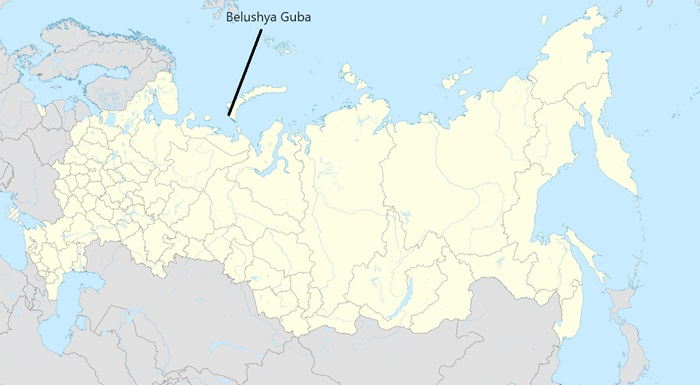
Belushya Guba is a small town located on the island of Novaya Zemlya in the far northern Russian Arctic. It is only accessible by boat or plane. The island is situated between the Barents and Kara Seas, and is part of the Arkhangelsk Oblast region. The population of Belushya Guba is approximately 2,500 people. It lies just north of the Arctic Circle, and is the northernmost settlement in Russia. The climate in Belushya Guba is very cold and harsh, with temperatures averaging -20°C in the winter and +7°C in the summer. The town experiences long, dark winters with snowfall from October to April, and only a few hours of daylight. The summer months bring some relief with longer days and the occasional rainfall. Belushya Guba is a largely isolated settlement, and its economy relies heavily on fishing and hunting. The town is home to a large military base, and is surrounded by vast, untouched tundra, making it a popular destination for nature lovers and adventure seekers. Aside from its natural beauty, Belushya Guba is also known for its rich cultural history. Many of the island’s original inhabitants are members of the Nenets people, who have lived in the area for centuries. The town also has a small museum dedicated to the history of the island and its people.
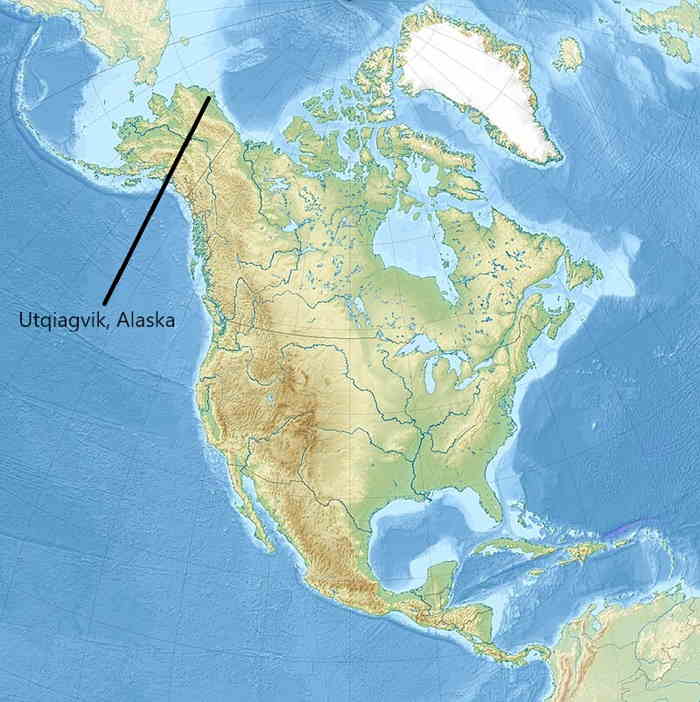
Utqiagvik, Alaska, United States is located in the northernmost part of the United States, in the state of Alaska. Located in the Arctic, it is the northernmost city in the United States and is situated on the Chukchi Sea, with the Inupiaq Eskimo village of Point Hope to the west and the Waring Mountains to the east. The city lies within the North Slope Borough and is the largest city of the region. Utqiagvik has a subarctic climate, with long and very cold winters and short and cool summers. The average high temperature during the summer is around 7°C, while the average low temperature during the winter is around -6°C The city receives very little precipitation, receiving an average of only 20 cm of rainfall each year. Utqiagvik is home to a diverse population, with the majority of residents being of Native American or Alaskan Native heritage. The city is known for its fishing industry, as well as its oil fields and natural gas reserves.
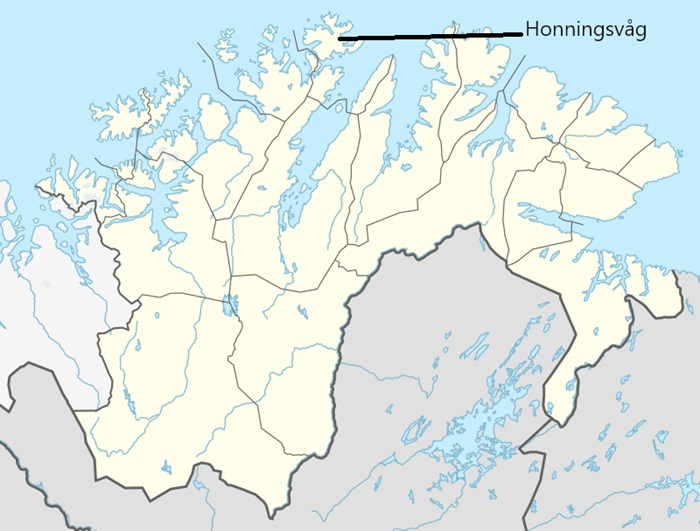
Honningsvåg is a fishing village and port located in the northernmost part of Norway, in the county of Finnmark. It is situated on the northern tip of the large island of Magerøya, which is separated from the mainland by Vestfjorden. It is situated 5.2 kilometers south of the North Cape and is the northernmost town in Norway - the northernmost point being the nearby village of Gjesvær. Honningsvåg is situated at the entrance to the Nordkapptunnelen, the world's northernmost road tunnel, which connects Magerøya to the mainland. The tunnel opened in 1999, and has made Honningsvåg a popular tourist destination. Honningsvåg is often dubbed "the northern capital of Norway", and is known for its arctic weather conditions and relatively long period of sunlight during the summer months. It is well known for its fishing industry, and is a popular destination for whale-watching cruises and other types of boat tours. The town has a long history of shipbuilding, and shipbuilding remains an important part of the local economy. Honningsvåg is well connected to the rest of Norway by an efficient transportation network. It is served by a local airport, and is connected to the mainland by the Nordkapptunnelen.

Uummannaq is a small town located in northwestern Greenland, the world’s largest island. It is located in the Uummannaq Fjord, a large inlet of the Greenland Sea, just south of the Arctic Circle and around 160 kilometers north of the capital of Nuuk. Uummannaq lies on the northern edge of Disko Bay and is surrounded by mountains and glaciers, making it a popular tourist destination. Uummannaq is known for its small-town charm and friendly inhabitants. It has a population of around 1,000 people, mostly Inuit, who rely on fishing and hunting for their livelihoods. The town is filled with colorful wooden houses, and the harbor is filled with fishing boats and kayaks. The town is a popular destination for tourists, with activities such as Arctic safaris, kayaking, dog-sledding, hiking, and fishing. Uummannaq is also home to some of the best whale-watching opportunities in the world. In the summer, the midnight sun provides 24-hour daylight, making for an unforgettable experience. The town is accessible by plane or boat from Nuuk, and it is an ideal base for exploring the stunning beauty of Greenland. The nearby Uummannaq mountain is the perfect backdrop for a hike or an unforgettable view of the surrounding fjords. Uummannaq is an ideal destination for those seeking an authentic Arctic experience.
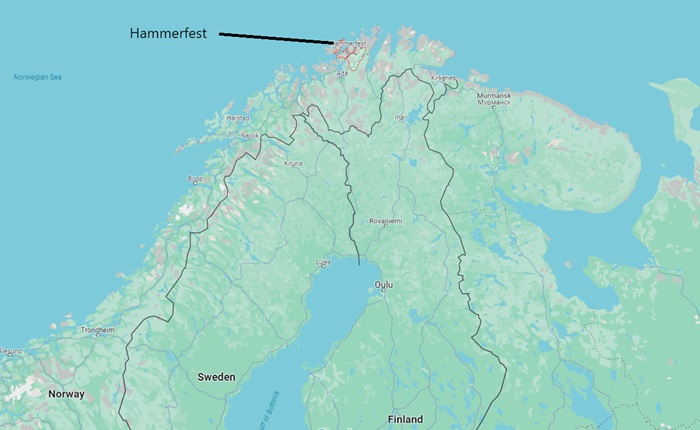
Hammerfest is a city located in the northernmost parts of Norway, on the island of Kvaløya. It is a small city of around 10,000 inhabitants. Hammerfest is located in the Arctic Circle, and experiences long, dark winters and short, light summers. It is situated about 13 km (8 miles) south of the North Cape, and is considered the gateway to the Arctic. The city is surrounded by mountains and has two distinct harbours, the eastern harbour and the western harbour. The eastern harbour is sheltered and is home to the city's fishing fleet. The western harbour is a more exposed area and is used by larger vessels. The city has a unique culture and is known for its traditional Sami culture, with many of its inhabitants hailing from the Sami people. It is also known for its natural beauty, with the majestic mountain of Hammerfesttinden providing a stunning backdrop. Nearby, the Barents Sea is home to an abundance of whale species, making it a popular spot for whale watching. Hammerfest is well connected to the rest of Norway, with regular domestic flights and ferry connections. The city is also connected to mainland Europe, with a direct ferry from Hammerfest to the port of Tromsø. With its stunning natural beauty, unique culture, and convenient connections, Hammerfest is a great destination for those looking to explore the Arctic.